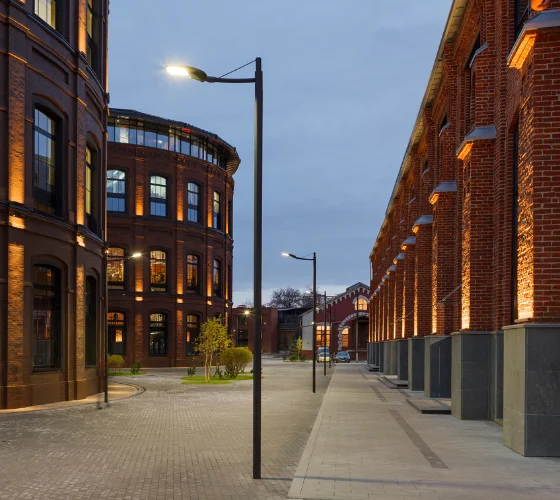Lighting has been transformed in the past 10 years by the introduction of low-cost LED luminaires which has enabled users to reduce energy costs and to reduce maintenance. This in the main has been positive, however there is still significant potential for poor quality designs and products to be installed. Our challenge for the next decade has to be to eradicate poor quality design.
Sustainability
In 2020, one of the key challenges facing the planet is that of increasing sustainability. There are a number of criteria that improve the sustainability of a lighting scheme. These can be summarized under the headings of “lighting design” and “product design” as follows:
Lighting Design is the key to success. One of the objectives of a competent lighting design is to minimize the energy consumption. The following criteria need to be considered for any lighting design…
- Does the area need to be lit?
- Has the optimum lighting class been chosen ensuring that the area is not over-lit or under-lit?
- Have good controls been incorporated that ensure that the lighting is only on when required and is dimmed or switched off as appropriate.
- Has the most efficient optic / light source been chosen for the specific task. (This means having the best light distribution for the area, not just having the best headline “lumens / watt”)
- Has the design undergone a full life cycle cost benefit analysis to ensure that it is affordable, particularly when looking at new column locations and service connection charges?
- Has the design taken into account all the environmental issues such as minimizing obtrusive light including glare and sky glow and protecting rural habitats for bats etc.
Product Design
- Is the design sustainable in relation to the equipment specified and its carbon footprint through the life cycle including recycling?
- Does the solution contribute to a more circular economy?
From the above list, it is clear, that lighting design is now much more complex than has been the case in the past. If this is the case, why is there still such an issue with some end users expecting a free of charge design from a manufacturer?
“Well designed and installed lighting is important for so many reasons; it reduces the adverse impact of lighting on human wellbeing, ecology and the environment, whilst also reducing energy consumption, lowering carbon emissions and lowering the contribution from artificial lighting on climate change.”























